Yerebatan Sarnici – from water storage to art gallery – Enciu Sonia-Ioana
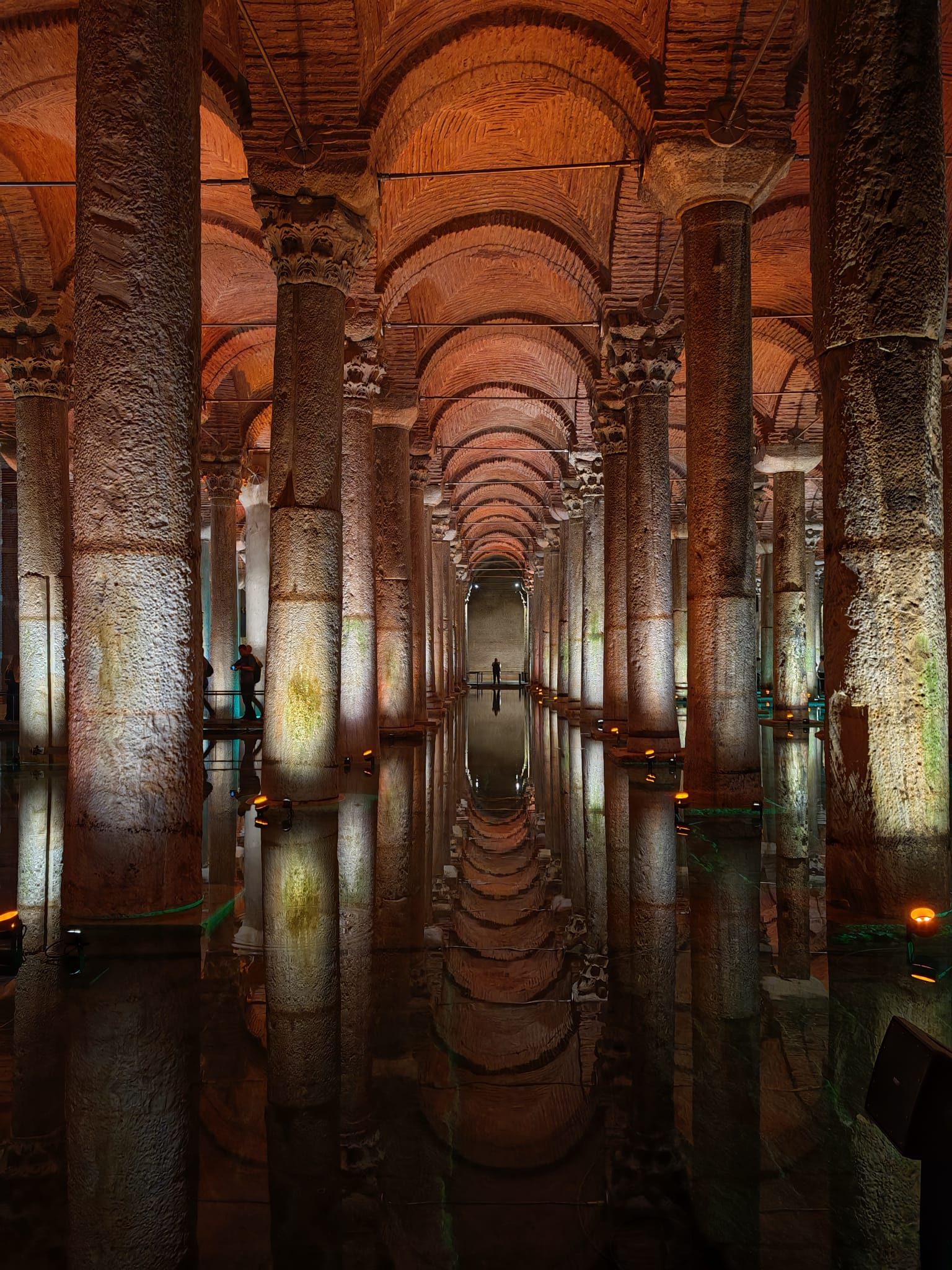
Basilica Cistern or Yerebatan Sarnıcı was built in the year 532 by Byzantine emperor Justinian. The cistern provided a water filtration system for the Great Palace of Constantinople and other buildings on the First Hill and continued to provide water to the Topkapı Palace after the Ottoman conquest (1453). Nowadays, the cistern holds a small quantity of water so visitors can walk around the attraction.
Once we entered the cistern, we emerged in colorful dim lights and a forest of 336 columns rising from the water. The columns are mainly built in the Ionic and Corinthian styles. A subtle detail that I noticed is that the marble from which the columns were made is smoothed by the water that flowed on them over the centuries - highlighting the old age of the Yerebatan beautifully. Additionally, only one column features engravings of a Hen's Eye and tears, which is said to be dedicated to the slaves who died building the structure. Make sure to make it to the end of the cistern to see the two Medusa heads. Their origin remains a mystery up until now but it is said that they're recycled from an antique building. Also, a light show is performed inside, but be careful as the lights go from bright to dim suddenly, visitors can trip and fall because of the darkness. Some modern art sculptures were also placed in the water. The pieces approach social and philosophical subjects, explained on signs placed in front of them.
The exhibition inside the cistern managed to integrate modern and philosophical aspects within the antique history of the attraction in a seamless and inspiring way. I encourage everyone to visit the Basilica Cistern, as it is a true historical and artistic show.
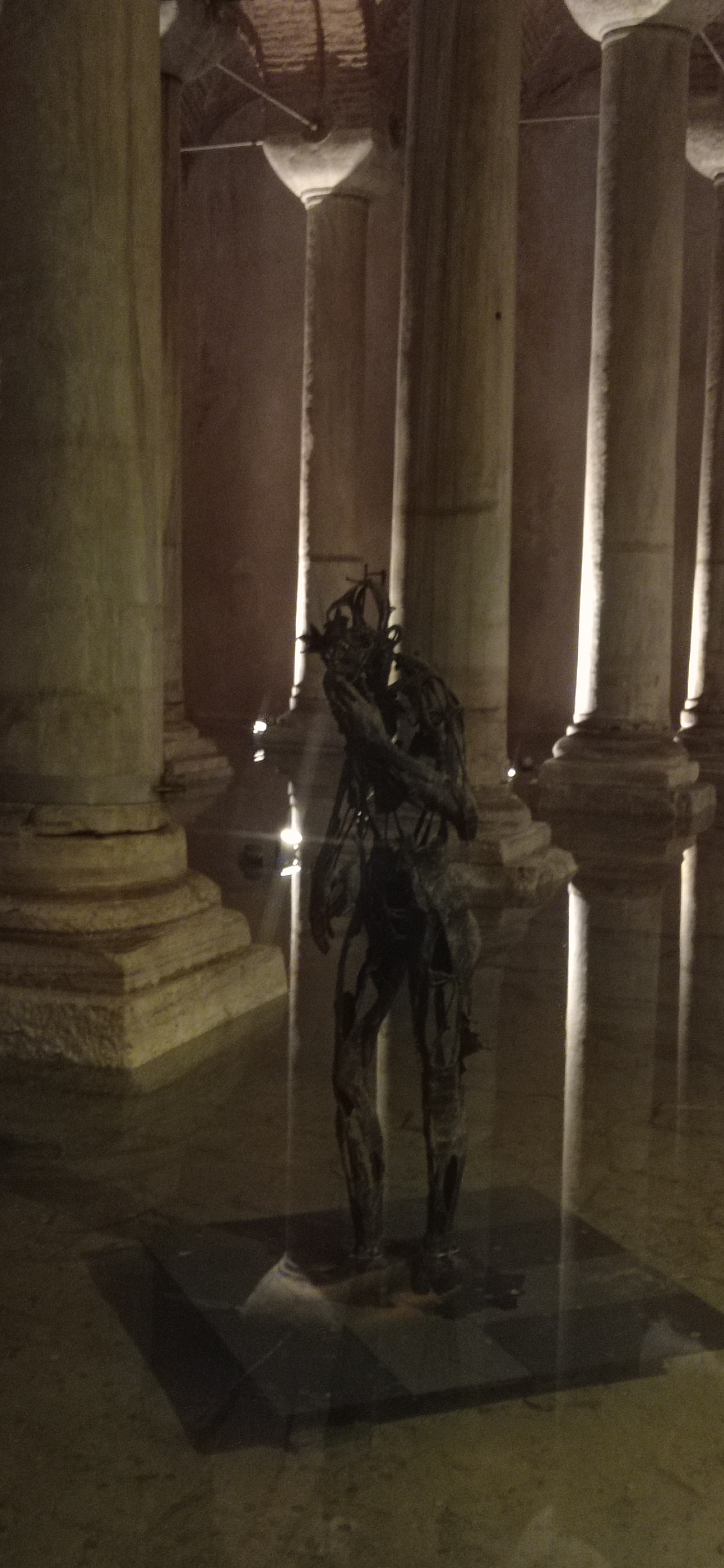 |
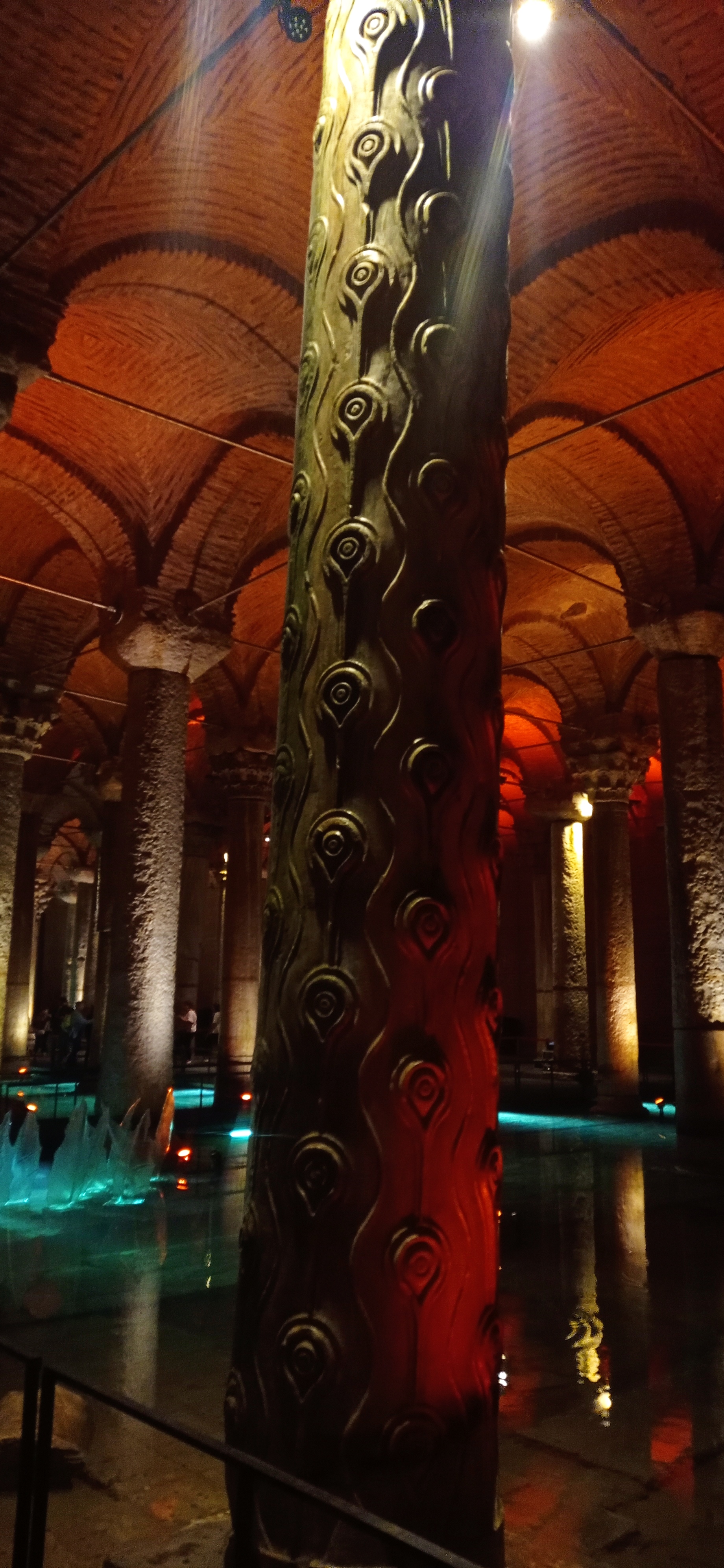 |
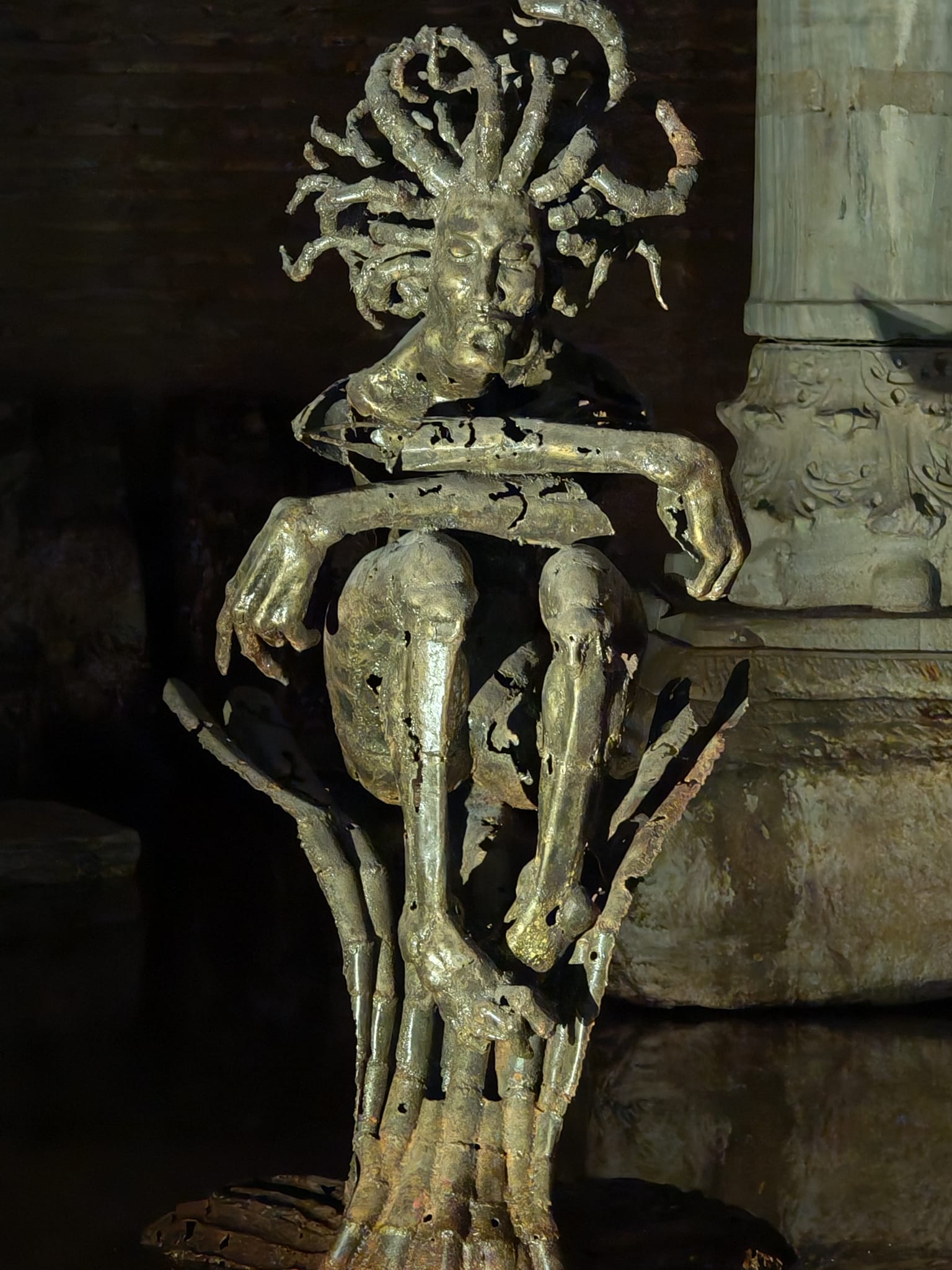 |
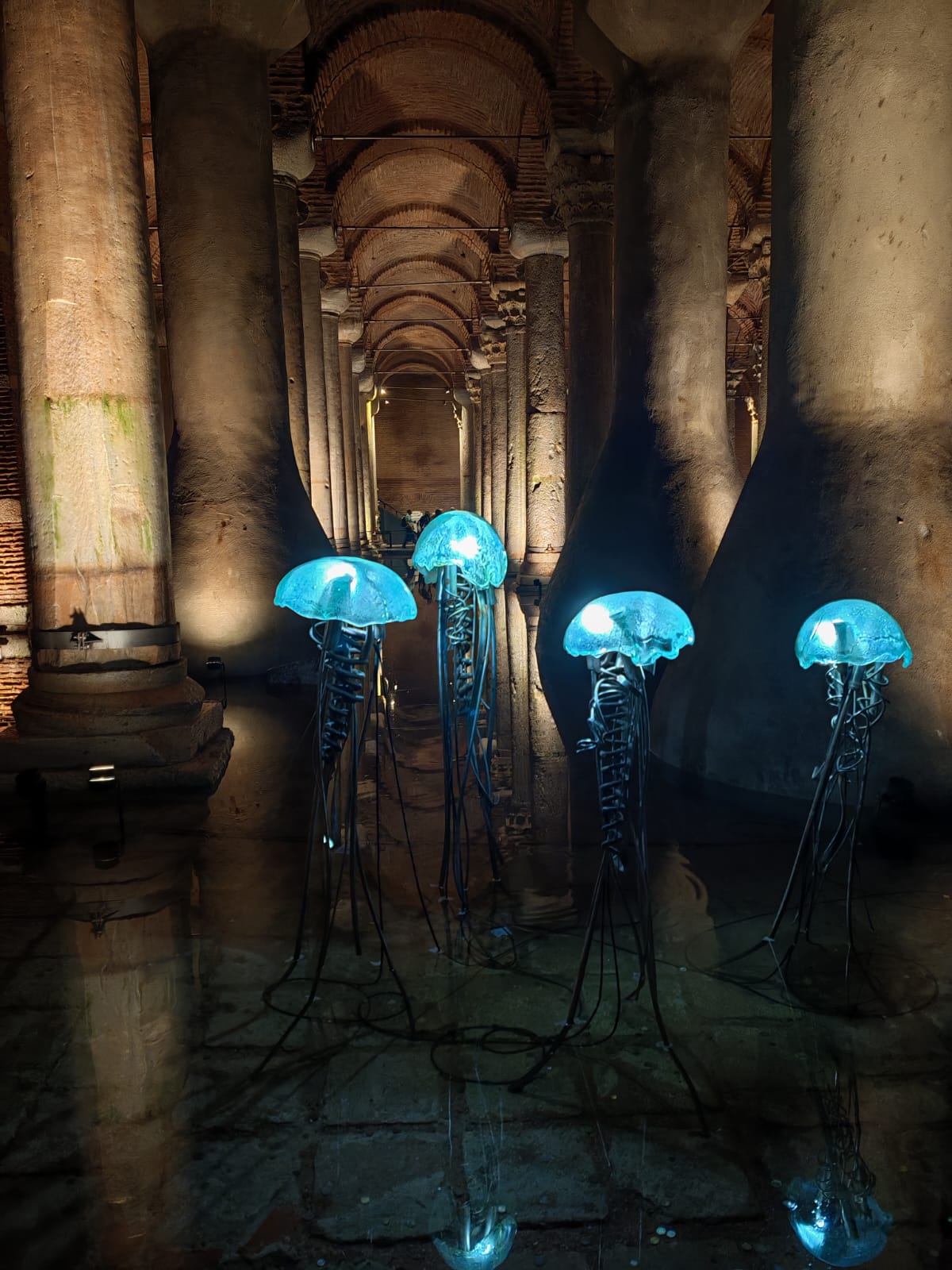 |